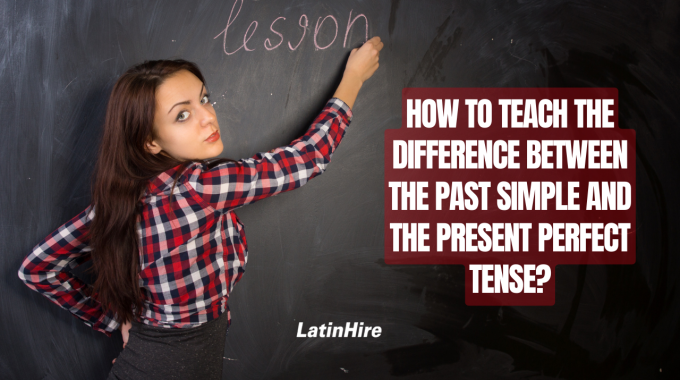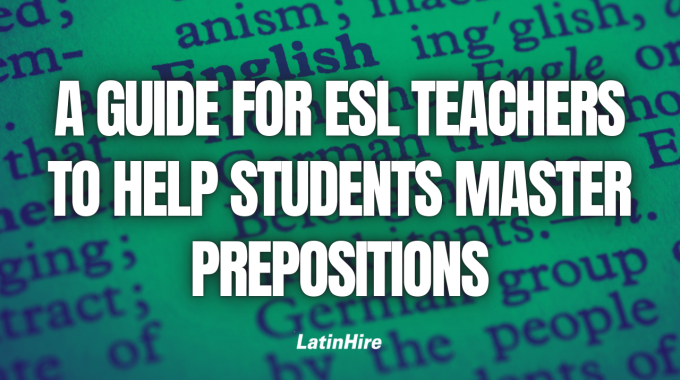Prepositions are some of the most commonly used words in the English language, but also…

How to teach the difference between the past simple and the present perfect tense?
When it comes to describing events that happened in the past, English speakers have several verb tenses to choose from. Two of the most commonly used ones are the past simple tense and the present perfect tense. While both of them refer to actions that took place in the past, they have some key differences that can affect their meaning and usage.
As an ESL teacher, you may get a lot of confused students who cannot differentiate between the two tenses. In this article, we provide you the tools to teach the difference between the past simple and present perfect tense!
The Past Simple Tense

The past simple tense is used to describe actions that were completed at a specific point in the past. The form of the verb in the past simple tense usually ends in -ed for regular verbs. However, there are many irregular verbs as well that need to be memorized.
Regular verb examples:
- I walked to the store yesterday.
- They studied for the test all night.
Irregular verb examples:
- She ate breakfast an hour ago.
- He wrote a letter to his mom.
(Note that the past simple tense usually does not have any connection to the present. This means that the past simple tense cannot be used with adverbs or expressions that indicate the present, such as “today,” “this week,” “right now,” or “at the moment.”)
The Present Perfect Tense

The present perfect tense, on the other hand, is used to describe actions that happened at an unspecified time in the past, or actions that started in the past and continue up to the present. The form of the verb in the present perfect tense is have/has + past participle.
For example:
- I have visited New York City many times.
- She has eaten sushi before.
- They have studied French for three years.
(Note that the present perfect tense is often used with time expressions that include the present, such as “just,” “already,” “yet,” “ever,” “never,” and “so far.” Also, the present perfect tense can be used to talk about experiences, changes, and results that happened in the past but are still relevant to the present.)
Comparing the Past Simple Tense and Present Perfect Tense
To better understand the differences between the simple past tense and the present perfect tense, let’s compare them side by side:

Let’s take a look at a few more examples:
- I ate pizza for lunch yesterday. (simple past tense)
- I have eaten pizza many times in my life. (present perfect tense)
In the first sentence, the action is completed and happened at a specific time in the past. In the second sentence, the action is unfinished and has a connection to the present.
- He finished his homework two hours ago. (simple past tense)
- He has finished his homework, so he can watch TV now. (present perfect tense)
In the first sentence, the time of the action is known and stated. In the second sentence, the time of the action is unknown, but the result is relevant to the present.
We hope this article will help you in your classroom when you teach the differences between the past simple and the present perfect tense! What other grammar topics do you find difficult to teach? Write them in the comments below and we will publish future articles to explain them!



